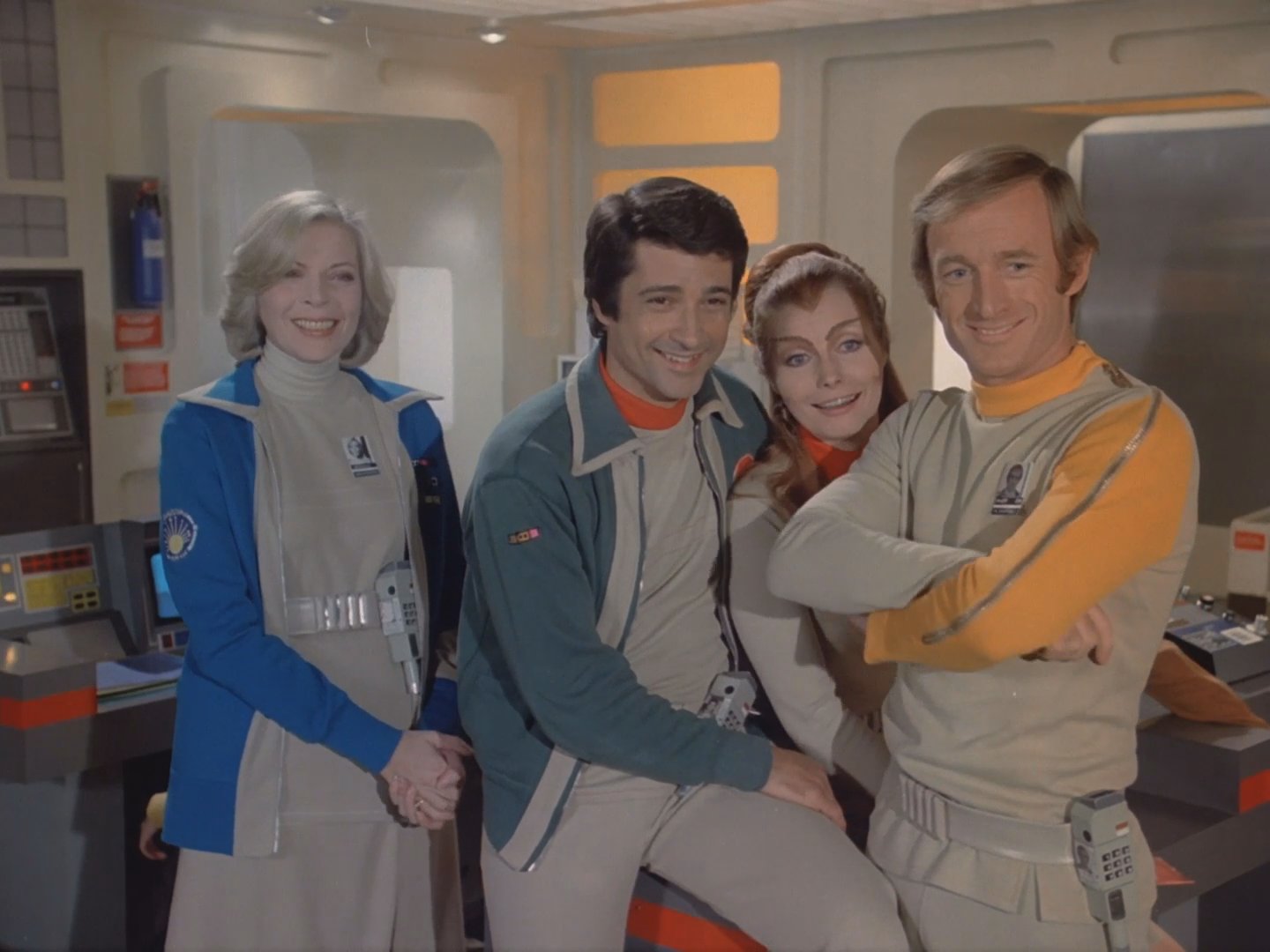
We might accept as axiomatic the belief that patience is a virtue. However, over the decades, several notable and even celebrated science fiction TV series have failed to live up to this ideal.
Instead of demonstrating patience and prudence, their makers have instead demonstrated radical impatience, and — after promising first season sorties — instituted sweeping changes that, in some cases, threw away the baby with the bath water.
Below is a list of five science fiction programs that — had they adhered more closely to their original format — might have survived the turbulent air-waves for several additional seasons.
In other words, these science fiction TV series were not broke, and simply didn’t require the kind of dramatic format “fixing” they endured.
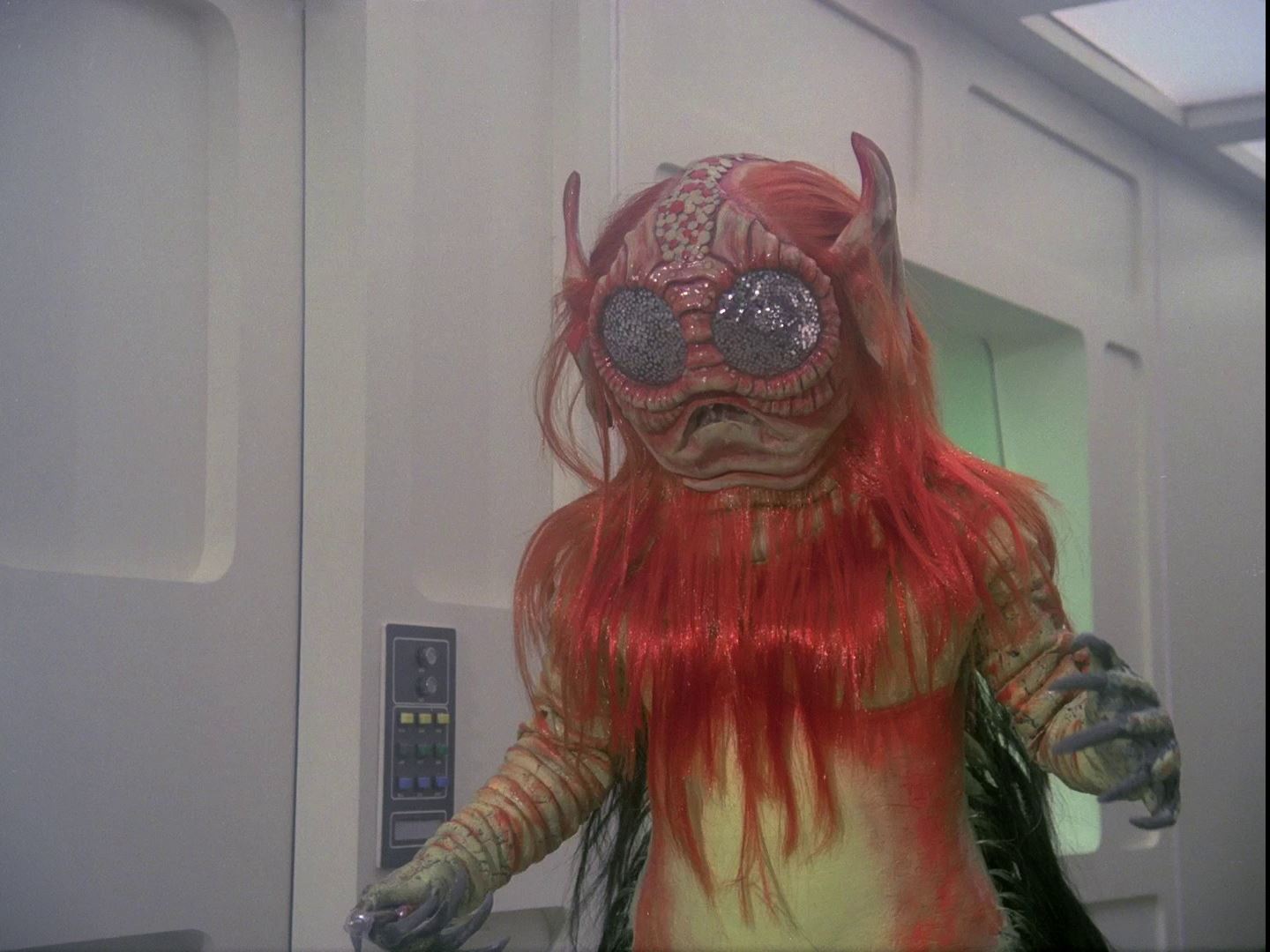
Space: 1999 (1975 – 1977)
During its first season on the air, Gerry and Sylvia Anderson’s 1970s-era space adventure drew “amazing ratings” in the U.S according to Dick Adler at The Los Angeles Times (January 7, 1976). Although prominent critics such as Isaac Asimov complained about the series’ scientifically-challenged premise, which involved the moon blasted out of Earth’s orbit and visiting other worlds, the series was nonetheless incredibly impressive in terms of production design, miniature effects, and philosophical storylines.
The Wall Street Journal termed Space:1999 “the most flashy, gorgeous sci-fi trip ever to appear on TV,” (“Sailing Along on a Moonbase Way,” Fall 1975) while Newsweek’s Harry Waters enthused that not since Stanley Kubrick’s 2001: A Space Odyssey (1968) had “ sci-fi freaks had the chance to trip out on so much surrealistic gimmickry”(“Spaced Out,” October 1975).
Meanwhile, the same paper that had printed Asimov’s negative review — The New York Times — suggested that Space: 1999 featured “what no other TV science-fiction program except Star Trek had – good stories and good special effects.” (October 19, 1975).
But at the end of Space:1999’s first year, however, the series stood on the chopping block of cancellation and American producer Fred Freiberger replaced Sylvia Anderson. In an effort to save the series, Mr. Freiberger “Americanized” Space:1999 to a substantial degree.
One major change was largely successful. Space:1999 Year Two introduced the shape-shifting metamorph named Maya, played by the charming and lovely Catherine Schell. Although Maya was a delightful alien character, the series simultaneously jettisoned familiar old hands such as Barry Morse’s Victor Bergman and Prentis Hancock’s controller, Paul Morrow.
Just as troubling, perhaps, Space: 1999’s singular sense of atmospheric, philosophical terror — in which all of space was an unsolvable mystery that the Alphans were psychologically unprepared to contend with — was overturned. That vision of the universe was replaced with a one more consistent with the tenets of the then-popular Star Trek. In other words, the marooned denizens of Moonbase Alpha suddenly found themselves battling sentient plants, silicon life-forms, and amazon women in cat-suits, as well as a Harry Mudd like trader/rogue called “The Taybor.” Space:1999 Year Two featured a lot of action, but much of it involved bad monster suits too, a far cry from the terrifying monster of the first season triumph, “Dragon’s Domain.”
In an effort to rival the popular Star Trek, the makers of Space:1999 thus made their series more like its competitor, a change which ultimately doomed the series. Instead of growing an audience based on their notable first season successes, the series producers fixed the things that, simply, weren’t broken.
Perhaps series star Martin Landau said it best. He told Starlog in July of 1986 (Lee Goldberg: “Martin Landau: Space Age Hero,” page 45.): “They changed it because a bunch of American minds got into the act and they decided to do many thing they felt were more commercial. I think the show’s beauty was that it wasn’t commercial, it had its own rhythm. I felt the episodes we started with in the first season were much more along the lines I wanted to go. To some extent, that was corrupted.”

Buck Rogers in the 25th Century (1979 – 1981)
Like Space:1999 before it, NBC’s post-Star Wars outer space series Buck Rogers in the 25th Century(1979 – 1981) endured a dramatic change from first season to second.
The first year of the Glen Larson series had been a swashbuckling, tongue-in-cheek adventure that featured Buck Rogers (Gil Gerard) and Wilma Deering (Erin Gray) essentially acting as secret agents in the far-flung 25th century. In this capacity, they subverted space dictators, battled despots like the Draconians and vanquished cult-leaders such as Kaleel (Jack Palance). They even rescued a “defector” from a communist-styled planet during the “space Olympics” episode, “Olympiad.”
Accordingly, the first season of Buck Rogers felt a lot like an outer-space variation on Mission: Impossible, only cheekier, and with less information to keep track of.
Although expensive to produce, Buck Rogers had found a distinctive groove, and proved popular with viewers. It even made the Nielson Ratings top forty, all while battling the Robin Williams juggernaut on ABC: Mork and Mindy.
At the end of the first season, producer Bruce Lansbury departed and was replaced by Gunsmoke’s John Mantley, a talent who enacted major alterations.
Dr. Huer (Tim O’Connor), Dr. Theopolis, the Earth Defense Directorate, and the Draconians were dropped from the format entirely, and Buck became a crew member aboard a starship called the Searcher, instead. The Searcher had been assigned to find the “lost tribes” of Earth; people who had departed their home planet after the nuclear holocaust of the 1980s.
And yes, that description sounds an awful lot like the premise of Battlestar Galactica (1978-1979).
Buck’s second season introduced a new resident alien, a bird-man called Hawk (Thom Christopher), while Wilma Deering became less assertive and much less central to the action. The second season also the introduction of an irritating new robot called Crichton, and saw Mel Blanc leave the series as the voice of Twiki.
Although Thom Christopher was always impressive as Hawk, and made the alien a compelling character (much as Catherine Schell had done with Maya on Space:1999), the shift in story-telling and tenor was the real problem. The stories on the new Buck Rogers became wannabe Star Trek episodes about new “civilizations of the week.” One especially dire episode saw Buck and Wilma dealing with a golden alien who aged backwards (like Jonathan Winters’ Mearth on Mork and Mindy), while another involved mischievous dwarves run amok on the Searcher.
Series star Gil Gerard was not pleased, and reportedly felt that the season was a rip off of both Star Trek and Battlestar Galactica.
The re-vamped Buck Rogers was canceled after half-a-season.
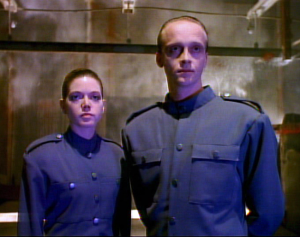
War of the Worlds (1988 – 1990)
The premise of this late-1980s syndicated series was that Martian invaders had attempted to invade Mother Earth in 1953, in the events depicted by the George Pal movie. However, “common bacteria” stopped the alien assault. But when scientists discovered later that the aliens were hibernating, not dead, the U.S. government suppressed the news, fearing a panic.
Instead, the U.S. army sealed up the alien bodies in black drums and stored them at remote military installation called “Jericho.” Meanwhile, the world at large seemed to forget entirely about the alien invasion.
By the year 1988, however, armed terrorists found the barrels, and the aliens awoke, stealing human form and launching a new, stealth war (of the worlds) against humanity.
Dr. Harrison Blackwood (Jared Martin) led a team against the Martian sleeper cell, known as “The Advocacy.” And protecting the team from danger was the series’ most popular character, Lt. Colonel Ironhorse (Richard Chaves), formerly a member of “Delta Squad.”
Shot in Canada and produced on the cheap, War of the Worlds nonetheless drew a large and supportive fan base throughout its first season, in part due to the fact that series often highlighted over-the-top gore, and showcased some quirky humor.
But you know where this is headed, right? Everything changed for the second season. In the re-booted War of the Worlds, Earth was no longer the planet we know, but a post-apocalyptic wasteland. Now, the heroes of the series were suddenly on the run from the aliens, and without a home base.
The bad guys — The Advocacy — were also dispatched and new aliens, the Morthren, replaced them.
The greatest offense, however, was that the series’ most beloved character, Ironhorse, was killed off during the first episode of season two and replaced with Adrian Paul’s John Kincaid. Paul was absolutely fine in the role, but it made zero sense to replace a popular character with a new character of similar type.
In short, the second season of War of the Worlds completely destroyed the world of the first season, killed the most popular character, and replaced one alien invasion with another. The changes were so radical and sweeping that the series was virtually unrecognizable, and it was canceled by the end of its sophomore season.
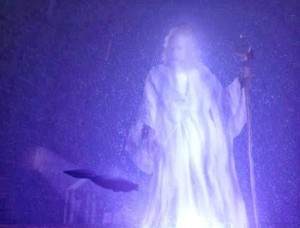
SeaQuest DSV (1993 – 1995)
This Steven Spielberg –produced series from the mid-1990s began its TV life as a serious, scientific, and futuristic exploration of the Earth’s sea. The meme was displayed ably in SeaQuest’s opening voice-over narration: “The 21st century: mankind has colonized the last unexplored region on Earth; the ocean. As captain of the seaQuest and its crew, we are its guardians, for beneath the surface lies the future…”
The series involved the voyages of a state of the art sub, SeaQuest, which operated under the aegis of the UEO (United Earth Oceans). SeaQuest was “the largest deep sea exploration vehicle ever,” and outfitted with a crew of 124 scientists and 88 military personnel. Playing the captain, Bridger, was the late Roy Scheider.
Among the other crew members on SeaQuest were the headstrong executive officer, Jonathan Ford (Don Franklin), head of science and medicine, Dr. Kristin Westphalen (Stephanie Beacham), Chief Engineer Katherine Hitchcock (Stacy Haiduk) and communications officer Tim O’Neill (Ted Raimi).
Other notable crew members and passengers on the first season of SeaQuest DSV included the teenage genius and computer whiz, Lucas Wolenczak (Jonathan Brandis) and Darwin, a dolphin who could communicate verbally with Bridger and the others using an instrument called a “vocorder.”
During the first season there was a dedicated attempt every week on SeaQuest to marry a hard-science concept or mission with some small but fantastical aspect of the sci-fi genre. In “Treasure of the Mind,” for instance, the SeaQuest discovered the lost Great Library of Alexandria intact at the bottom of the Mediterranean Sea. Another story (“Games”) saw the sub exploring the polar ice caps.
Finally, each episode of the first season ended with a brief epilogue featuring the series’ science adviser, oceanographer Dr. Robert Ballard. His monologues would always point out how specific aspects of the episode were based on fact; and then encourage viewers to learn more about the subject.
But reality and science went out the window in the dramatically re-vamped second season.
Fully half the cast was axed from the show, including Stacy Haiduk, John D’Aquino, Stephanie Beacham. Worse, their replacement characters were obvious rejects from the Star Trek universe. The new doctor had Counselor Troi-like empathic powers, for instance, and other characters were genetically-engineered “resident” aliens called “Daggers.”
Once more, the real problem, however, was not the cast-changes, but the shift in storytelling style. The second season found the SeaQuest encountering giant sea monsters and on one wretched occasion, the Greek God, Poseidon/Neptune.
In a notorious with the Orlando Sentinel on September 13, 1994 star Roy Scheider lambasted the new direction of Sea Quest. He said he was “ashamed” of the series, and noted that the new stories were “junk.” He also said that the series was “not even good fantasy. I mean Star Trek does this stuff much better than we can do it. To me the show is now 21 Jump Street meets Star Dreck.”
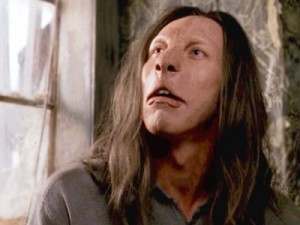
Dark Angel (2000 – 2002)
Long before Avatar, James Cameron produced this sci-fi series with writing partner Charles Eglee, and Jessica Alba starred as “Max,” a genetically-enhanced woman born of Project Manticore.” Max, a “transgen” lived in an economically depressed and EMG-ravaged Seattle of the year 2020.
In this dystopian future, the United States had become a third-world country with its treasures sold off to the highest bidders. The series also anticipated the use of automated military drones in combat, and featured a Seattle run by a “protectorate” of corrupt agencies.
The first season of Dark Angel was extremely grounded in gritty reality, and saw Max working with a resourceful journalist/crusader, Logan Cale (Michael Weatherly) known as “Eyes Only.” He called himself “the only free voice left in” Seattle, and made it his business to expose the corrupt. Cale ran a version of WikiLeaks before such a thing existed.
Although initial ratings were strong — in the realm of 17 million viewers for the premiere episode — Dark Angel was barely renewed by Fox for a second season. And that second season was quite different in style and feel from the first, a veritable dumbing down or lobotomy of the premise.
Suddenly, Max became surrounded by other genetic mutations — the equivalent of “resident aliens” – and had to care for a chimera creature called Joshua (Kevin Durand), a dog-boy of sorts. This dreadful character offered lame comic relief and in one terrible episode (“Medium is the Message”) ate a tube of paint.
In just one season, the show went from being a smart exploration of dystopia, military rule, and economic depression to a partially-comedic effort that ramped up the romantic angles, and featured a love triangle between Logan, Max, and future Supernatural star Jensen Ackles, as a transgen named Alec. Similarly, many supporting cast members from the first season were either axed or given substantially less screen-time than before.
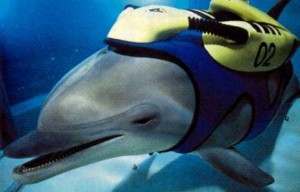
Today, history might remember Space:1999, Buck Rogers in the 25th Century, War of the Worlds, SeaQuest DSV, and Dark Angel quite differently if their second season re-vamps had not so radically altered the very qualities that made the programs successes in the first place.
These series — trees cut down in winter, as it were — weren’t broken to begin with, and history now records that many of these efforts to “fix them” were misguided…or worse, the very reason they were cancelled.
Would you like to support Flashbak?
Please consider making a donation to our site. We don't want to rely on ads to bring you the best of visual culture. You can also support us by signing up to our Mailing List. And you can also follow us on Facebook, Instagram and Twitter. For great art and culture delivered to your door, visit our shop.


